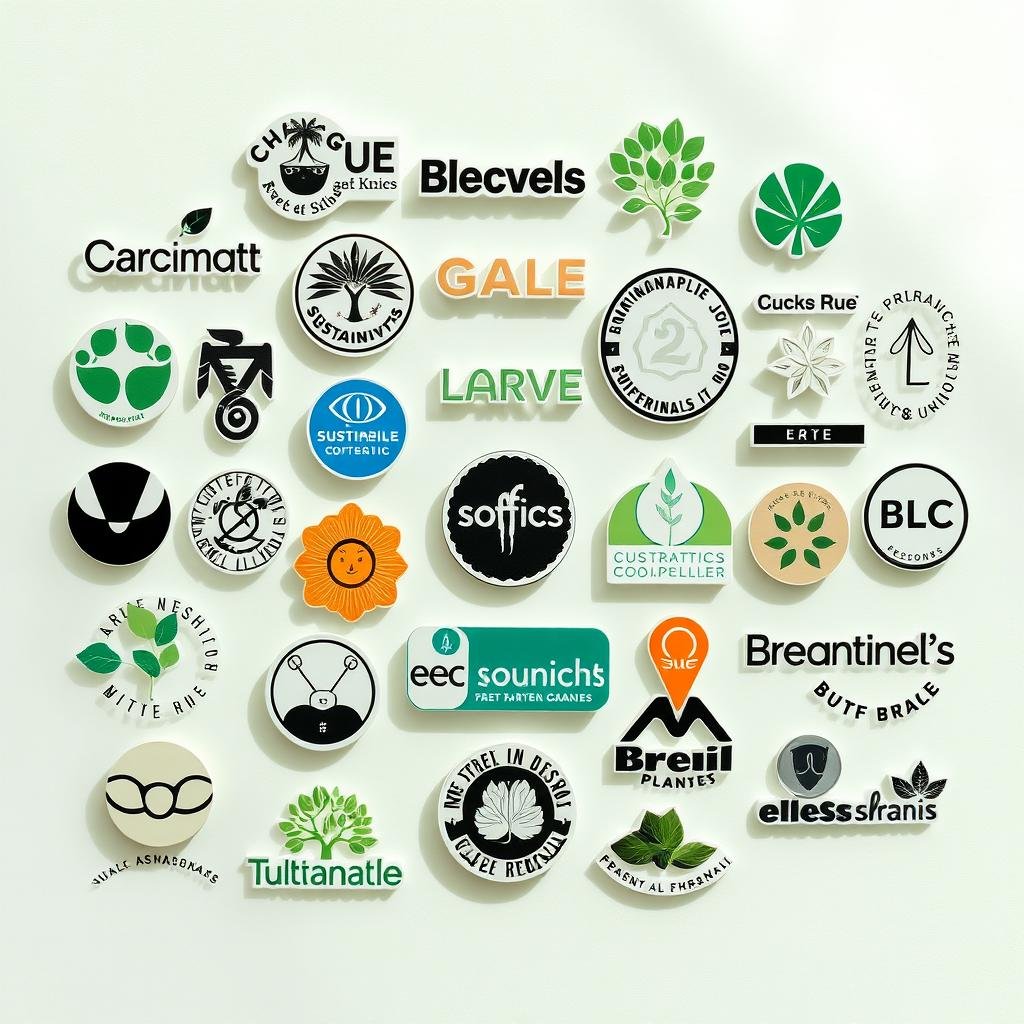Living an eco-conscious life is more than a trend—it’s a powerful way to make a positive impact on the planet. Many modern households are embracing sustainability as a core part of their lifestyle. By making thoughtful choices, you can reduce waste, save money, and create a healthier environment for your family.
Small changes in your daily routine can lead to big results. From energy-efficient appliances to mindful consumption, these steps align with both environmental and financial wellness. Real-world success stories from Gen Z and Millennial advocates show how easy it is to start.
Ready to transform your home into a planet-friendly space? Let’s explore actionable strategies that blend smart living with eco-conscious practices. Together, we can create a brighter future—one step at a time.
1. Invest in Durable, Eco-Friendly Products
Investing in high-quality, planet-friendly items pays off in the long run. These products not only reduce waste but also save you money over time. By choosing items made from durable materials, you’ll cut down on replacements and landfill contributions.
Why Quality Matters
Premium products may cost more upfront, but their longevity makes them cost-effective. For example, bamboo toothbrushes last 3-4 times longer than plastic ones. LED bulbs use 75% less energy and have a lifespan 25 times greater than traditional bulbs.
Energy-efficient appliances can save you an average of $380 annually on utility bills. Over five years, these savings add up significantly. Smart thermostats, for instance, have helped homeowners reduce energy consumption by up to 20%.
Examples of Long-Lasting Items
Neem wood combs and plantable seed pencils are innovative alternatives that combine functionality with eco-consciousness. Organic cotton essentials, unlike fast fashion, are designed to last and reduce environmental impact.
PosiGen’s solar leasing program offers lifetime savings of $20,000 to $75,000. These examples show how investing in durable goods benefits both your wallet and the planet.
2. Embrace Secondhand Shopping
Secondhand shopping is a game-changer for both your wallet and the planet. It’s a simple yet impactful way to reduce waste and save money. With 85% of Gen Z already on board, it’s clear that this trend is here to stay.

Benefits of Thrift Stores and Online Marketplaces
Thrift stores and online platforms like ThredUp and Facebook Marketplace offer endless options for unique finds. Refurbished electronics can save you 40-70%, while vintage décor cuts manufacturing emissions by 82%. These items not only save resources but also add character to your space.
How to Find Hidden Gems
Spotting quality construction in used furniture is easier than you think. Look for solid wood frames and sturdy stitching. Creative upcycling projects, like turning old doors into tables, can breathe new life into salvaged materials.
Always sanitize and refresh secondhand finds before use. Families can save an average of $1,200 annually by buying used. TikTok creators have inspired countless DIY transformations, proving that secondhand shopping is one of the best ways to live sustainably.
3. Reduce Single-Use Items with Reusable Alternatives
Switching to reusable items is a small change with a big impact. By replacing disposables with durable alternatives, you can cut down on waste and save money. Simple swaps like reusable bottles, bags, and containers make a world of difference.

Everyday Swaps to Make
Start with easy changes. Replace plastic water bottles with stainless steel ones. Swap plastic grocery bags for cotton produce bags. These small steps can eliminate thousands of disposable items annually.
Lauren Buchanan’s #SustainabilityTok hacks show how kitchen swaps can be fun and effective. DIY beeswax wraps are a great alternative to plastic wrap. They’re cost-effective and eco-friendly.
Cost Savings Over Time
Reusable items save money in the long run. A stainless steel water bottle can save you $6,000 over a lifetime. Cotton produce bags eliminate 1,000 plastic bags each year.
Low-flow showerheads save 2,700 gallons of water annually. Stainless steel straws cost less than $10 and last for years. These changes add up, benefiting both your wallet and the planet.
4. Get Creative with DIY Projects
Unleash your creativity with DIY projects that transform everyday items into something extraordinary. These hands-on activities not only reduce waste but also add a personal touch to your home. From upcycling old furniture to crafting homemade cleaners, the possibilities are endless.
Simple Upcycling Ideas
Give new life to old items with these easy upcycling ideas. Turn wine bottles into stylish lamps, reducing glass waste by 92%. Transform pallet wood into a backyard compost system for your garden. Old t-shirts can become reusable shopping bags, saving resources and money.
- Create herb garden starters using egg cartons.
- Join community tool libraries to reduce individual purchases.
- Repurpose old doors into unique tables or shelves.
Making Your Own Cleaning Products
Homemade cleaners are cost-effective and better for your health. A vinegar-based all-purpose cleaner costs just $0.25 per bottle, compared to $5 for store-bought versions. These non-toxic solutions are safe for your family and the environment.
- Mix equal parts vinegar and water in a spray bottle.
- Add a few drops of essential oil for a fresh scent.
- Use baking soda for scrubbing tough stains.
By embracing DIY projects, you can save over $480 annually while making a positive impact. Start small, and watch your creativity flourish!
5. Cut Down on Energy Consumption
Reducing energy usage doesn’t have to be complicated—it’s about making smarter choices. By optimizing your home’s energy efficiency, you can lower your bills and reduce your environmental footprint. Start with simple changes that add up over time.

Switch to LED Bulbs
One of the easiest ways to save energy is by switching to LED bulbs. They use 75% less power than traditional incandescent bulbs and last 25 times longer. Over its lifetime, a single LED bulb can save you $55. It’s a small change with big results.
Consider replacing all the bulbs in your home for maximum impact. You’ll notice the difference in your bills and enjoy brighter, more efficient lighting.
Unplug Electronics When Not in Use
Did you know electronics still draw power even when turned off? This “phantom load” can cost you up to $100 annually. Combat this by unplugging devices or using smart power strips. These strips automatically cut power to idle electronics.
Make it a habit to unplug chargers, TVs, and gaming consoles when not in use. It’s a simple step that can lead to significant savings.
For even greater efficiency, conduct an energy audit to identify waste hotspots. Programmable thermostats can optimize heating and cooling, saving you up to 20% on energy costs. Drying racks instead of dryers can save $150+ annually. Every action counts!
6. Support Sustainable Brands
Your shopping choices can shape a better future for the planet. By supporting brands committed to sustainability, you contribute to reducing your carbon footprint. These companies prioritize ethical practices, from sourcing materials to packaging.

How to Identify Eco-Friendly Companies
Look for certifications like Fair Trade or Rainforest Alliance. These labels ensure ethical practices. B Corp certification, for example, requires an 80+ ESG score, reflecting a company’s commitment to social and environmental responsibility.
Use apps like Good On You to evaluate brands. They break down supply chain transparency, helping you make informed decisions. Patagonia’s Worn Wear program is a great example of a brand promoting reuse and repair.
The Impact of Your Purchasing Choices
Your decisions matter. When 1,000 shoppers choose eco-friendly brands, the collective impact is significant. Sustainable packaging, for instance, is worth paying a premium for, as 73% of consumers agree.
By supporting ethical companies, you drive demand for greener practices. This shift encourages more brands to adopt sustainable methods, creating a ripple effect. Together, we can make a difference—one purchase at a time.
7. Practice Conscious Consumption
Conscious consumption is a powerful way to align your spending with your values. By being mindful of what you buy, you can transform your lifestyle and budget. It’s about making choices that benefit both you and the planet.
Ask Yourself: Do I Really Need This?
Before making a purchase, pause and reflect. The 30-day rule reduces impulse buys by 65%. Wait a month—if you still want it, it’s likely a meaningful addition to your life.
- Use the 10-10-10 decision matrix: How will this purchase affect me in 10 minutes, 10 months, and 10 years?
- Organize your pantry to reduce food waste and save money.
- Practice mindfulness exercises to identify shopping triggers.
Adopting a Minimalist Mindset
Minimalism isn’t about deprivation—it’s about focusing on what truly matters. Minimalists save 40% more annually, proving that less can mean more money in your pocket.
- Create a capsule wardrobe for seasonal planning.
- Profile zero-waste families for inspiration.
- Calculate the environmental impact of delayed gratification.
By embracing conscious consumption, you can live a more intentional and fulfilling life. Start today and see the difference it makes!
8. Take the First Step Toward a Greener Future
The journey to a greener future starts with small, meaningful actions. Begin with a 30-day challenge to reduce waste and energy use. Track your progress and celebrate each milestone. You’ll see how simple changes can lead to big results.
Get involved in community action plans. Work with neighbors to organize recycling drives or plant trees. Local programs often provide resources to make it easy. Together, you can amplify your impact.
Pair eco-savings with financial goals. Cutting energy use can help build an emergency fund. It’s a smart way to secure your health and the planet’s. Inspirational quotes from Gen Z activists remind us that every effort counts.
Your home can be a hub for sustainable living. Start today and inspire others to join. Personal action creates global change. The future is in your hands—make it bright!
